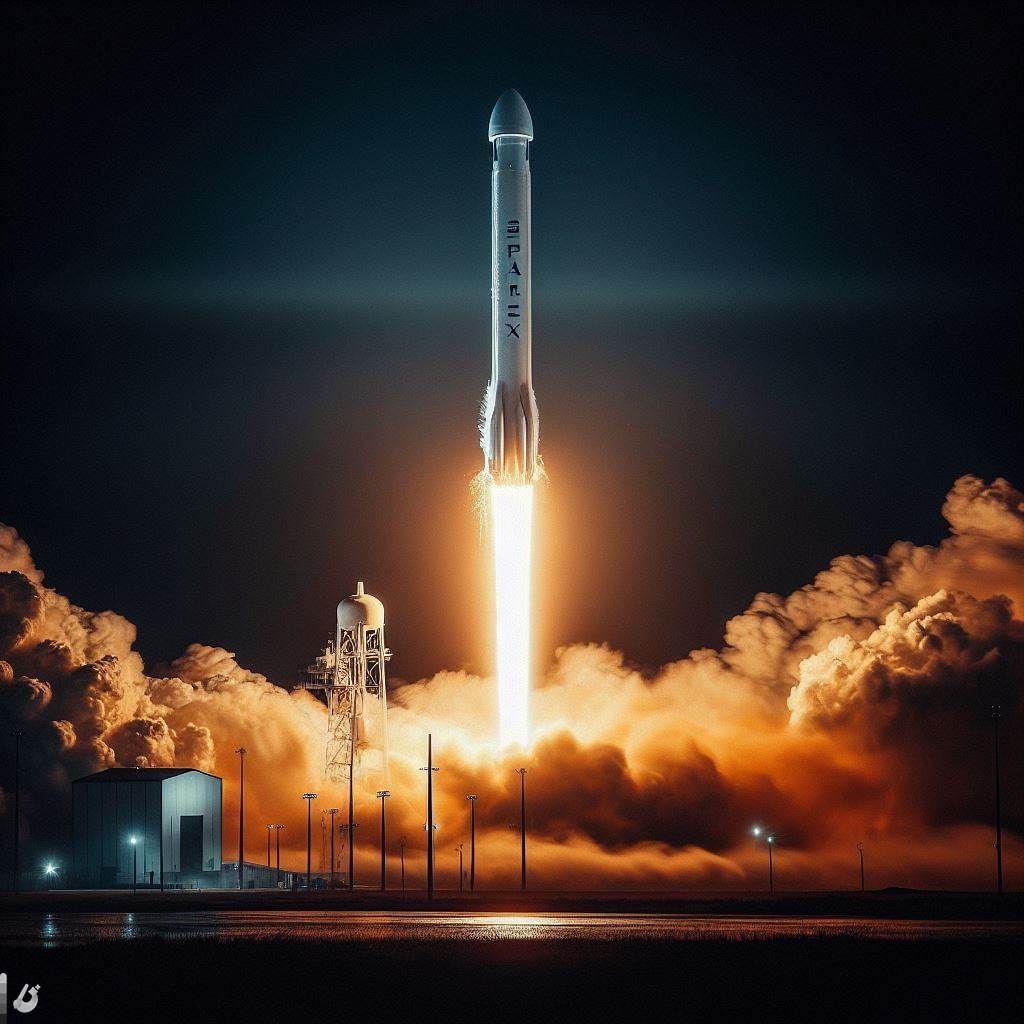SpaceX: Pioneering the Future of Space Exploration

SpaceX has become one of the most innovative and influential companies in the world, revolutionizing the way we think about space travel and exploration. Founded by entrepreneur Elon Musk in 2002, SpaceX has achieved feats that were once considered impossible—reusable rockets, private crewed missions, and ambitious plans for colonizing Mars. With its vision firmly set on the stars, SpaceX continues to inspire the world and shape the future of humanity beyond Earth.
In this article, we’ll dive deep into the history, missions, technology, and goals of SpaceX. Along the way, you’ll discover how this company is changing the space industry forever.
The Founding of SpaceX

SpaceX started with a bold goal: to make space travel affordable and accessible. When Elon Musk launched in 2002, he wanted to address the high cost of launching rockets into orbit. His idea was simple yet revolutionary—create rockets that could be reused instead of discarded after each launch.
At the time, the space industry was dominated by government agencies like NASA and international space programs. Musk’s plan to introduce private-sector competition was met with skepticism. However, with unwavering determination and years of research, began developing a new generation of rockets capable of changing the course of space exploration.
Early Struggles and Breakthroughs
Like every great venture, SpaceX faced setbacks in its early years. Between 2006 and 2008, three consecutive launches of their first rocket, the Falcon 1, failed. But refused to give up. On the fourth attempt, the Falcon 1 reached orbit, making it the first privately developed rocket to do so.
This success marked a turning point for , catching the attention of NASA, which awarded the company a contract to deliver supplies to the International Space Station (ISS). This partnership proved essential in cementing role as a leader in the aerospace industry.
Reusable Rockets: A Game-Changer
One of most important achievements is the development of reusable rockets, a concept that has dramatically lowered the cost of space travel. Traditionally, rockets were single-use, with stages falling back to Earth and burning up in the atmosphere.
Falcon 9 changed this paradigm. With its first stage capable of landing back on Earth and being reused multiple times, the Falcon 9 has made space launches more sustainable and cost-effective. This innovation means that:
- Less material waste is created after launches.
- Launch costs are reduced by millions of dollars.
- More frequent launches become feasible, accelerating research.
The Falcon 9’s landings—whether on floating drone ships or launch pads—have become an iconic part of missions, showcasing the company’s engineering brilliance.
Major Missions
SpaceX has completed several historic missions that demonstrate its ability to push boundaries. Let’s look at some of their most groundbreaking achievements:
- Crew Dragon Mission (2020): became the first private company to send astronauts to the ISS, marking a new era of spaceflight.
- Starlink Satellite Network: launched thousands of small satellites to create a global internet network, providing high-speed internet to remote areas around the world.
- Inspiration4 (2021): This mission took four civilian astronauts on a three-day orbit around Earth, becoming the first fully private spaceflight.
- Transporter Rideshare Program: offers affordable space access to small satellite companies by launching multiple satellites aboard a rocket.
These missions highlight versatility, from advancing space tourism to developing infrastructure for future missions beyond Earth.
The Starship: Humanity’s Gateway to Mars
SpaceX’s most ambitious project is the development of Starship, a fully reusable spacecraft designed to take humans to the Moon, Mars, and beyond. Starship is a two-stage rocket with both the booster (called Super Heavy) and upper stage built for reuse.
Key Features of Starship:
- 100-passenger capacity for interplanetary travel.
- Refueling in orbit, enabling long-distance missions.
- Designed to land on multiple surfaces, including the Moon and Mars.
envisions Starship as the vehicle that will make the dream of colonizing Mars a reality. Elon Musk’s vision is to establish a self-sustaining colony on Mars within the next few decades, allowing humanity to become a multi-planetary species.
NASA Partnerships and Lunar Missions
SpaceX’s partnership with NASA has been a cornerstone of its success. In 2021, NASA awarded a contract to develop Starship as part of the Artemis program, which aims to return astronauts to the Moon by 2025.
With this collaboration, will play a crucial role in establishing a long-term human presence on the Moon. The lessons learned from these lunar missions will serve as stepping stones for future missions to Mars.
SpaceX and the Rise of Space Tourism
Space tourism is no longer science fiction, thanks to SpaceX. With the success of missions like Inspiration4, the company has opened the door for ordinary people to experience space. Although space travel remains expensive, SpaceX’s goal is to make it affordable for more people in the coming years.
Key benefits of space tourism with SpaceX:
- Inspiring future generations by showing that space is within reach.
- Funding future research by attracting private customers.
- Encouraging technological advancements that benefit all sectors.
SpaceX’s approach is paving the way for a future where space travel becomes as routine as air travel.
A Table Highlighting Key SpaceX Milestones
MilestoneYearImpact
First Falcon 1 reaches orbit 2008 First private rocket to enter Earth’s orbit.
First reusable rocket landing 2015 Falcon 9 booster lands, revolutionizing launches
Crew Dragon ISS mission 2020 First private company to send astronauts to space
Starship prototype launch 2021 Successful test flights for interplanetary travel
How SpaceX Is Shaping the Future
SpaceX isn’t just a company—it’s a movement that’s reshaping how we view the possibilities of space. Its focus on innovation, sustainability, and accessibility ensures that the benefits of space exploration are shared with humanity.
The company’s Starlink project aims to provide global internet access, helping bridge the digital divide. Meanwhile, the development of Starship offers hope for future exploration beyond our planet, making dreams of a human presence on Mars seem within reach.
Challenges Faced by SpaceX
Despite its success, SpaceX faces challenges along the way. These challenges include:
- Regulatory hurdles: Working with government agencies requires approvals and meeting strict standards.
- Technical failures: Testing new technology often comes with setbacks, such as rocket explosions during development.
- Competition: SpaceX competes with other aerospace giants like Blue Origin and Boeing.
However, SpaceX’s resilience and commitment to solving complex problems demonstrate that it is more than capable of overcoming these obstacles.
Conclusion: SpaceX and the New Space Age
As SpaceX continues to push the boundaries of what’s possible, it’s clear that the company has ushered in a new space age. Its reusable rockets, private spaceflights, and ambitious plans for Mars set it apart as a true pioneer in the industry.
From launching satellites to developing interplanetary spacecraft, SpaceX is showing the world that the future of space exploration is brighter than ever. With every launch, SpaceX not only advances technology but also inspires humanity to dream bigger and aim higher.
It’s no wonder that SpaceX has become a symbol of hope, ambition, and innovation. As the company moves forward, the world watches eagerly, knowing that its efforts could one day make life on another planet a reality.
In the words of Elon Musk, “We want to wake up in the morning and think the future is going to be great—and that’s what being a spacefaring civilization is all about.”
And with SpaceX leading the charge, the sky is no longer the limit.





